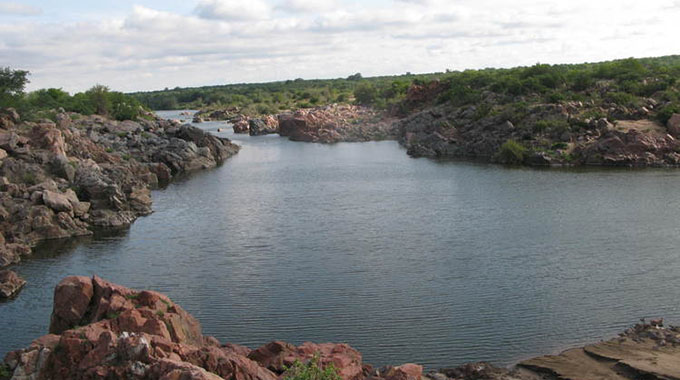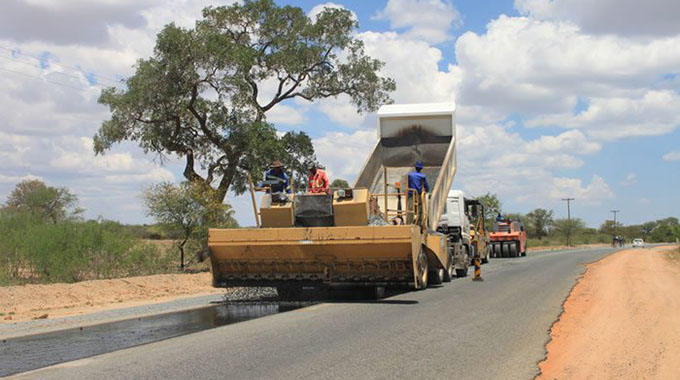Beitbridge: A virgin tourism zone

Thupeyo Muleya Feature Correspondent
BEITBRIDGE District in the southernmost part of Zimbabwe sits on perhaps a virgin tourism zone with great potential to contribute to the country’s gross domestic product.
Like most countries, Zimbabwe has been working round the clock promoting tourism activities known to contribute an estimated 10 percent of the GDP annually.
Commonly referred to as a world of wonders, Zimbabwe has adopted robust policies to speed up economic growth through accelerated development of tourism facilities and products.
In southern part of the country are two great transfrontier conservation areas (Greater Limpopo and the Greater Mapungubwe TFCAs), which the country shares with Mozambique, Botswana and South Africa.
This region is rich in natural wonders and historical sites.
The Limpopo River which separates the country from South Africa is dotted with several natural features on its course right to the Indian Ocean.
All these Zimbabwean components of the megaparks are found in Beitbridge district on the east and west.
An hour’s drive southwest of Beitbridge town will lead you to Sentinel Safaris where the country’s component of the Greater Mapungubwe TFCA begins.

Mrs Vanessa Bristow showing some of the dinosaur fossils at the Greater Mapungubwe TFCA
This area has been home to the Bristows for over five decades and has become a very significant feature since the discovery of the large dinosaur fossil beds, the family have known since 1950.
The safari is also rich in fauna and flora with over 300 birds species, Mopani woodlands, Mapungubwe Heritage and archaeological and middle Stone Age sites which are more than 750 years old.
Sentinel Safaris co-director, Mrs Vanessa Bristow said they had engaged geologist/palaeontologists husband-and-wife team currently awaiting authorisation by Government to explore the area.
“There are at least 15 known sites which are between 190 and 240 million years old though we continue to discover more,” said Mrs Bristow.
“One of the sites was discovered around 1994 when a member of the family stumbled on the clearly visible vertebrae, ribs, and pelvis and leg bones in their sandstone sarcophagus while walking on the farm with friends.
“Another site was discovered on Christmas Day in 2006 by our son Adam Bristow, when he was sent with his brother to look for fossils with their new folding pick-and-spade sets.
“The site has a collection of large vertebrae and limb bones which were found tumbling out of a steep hillside where a deep gulley was being gouged by rain water.”
Mrs Bristow said the most common species on Sentinel were Massospondylus carinatus Owen. Massospondylus means “massive spine” and is so named because of the heavy, robust vertebrae associated with this species.
She said it was difficult to easily tell from the available fossil material whether the animals are male or female, though Massospondylus was a “pro-sauropod” (ie coming before the larger, better known “sauropod” species such as brachiosaurus.)
According to Mrs Bristow, the creatures may also have been opportunistic carnivores that ate carrion when they could.
“Scientists are excited by Massospondylus because it marks the physiological divergence of lizard and bird forms in the fossil record of evolution,” she added.
She said they had a collection of numerous loose bones — ribs, vertebrae, shoulder blades, limbs, hand and feet bones, and claws — that have been found.
In addition, Mrs Bristow said they had a permanently articulated skeleton in sandstone displaying the spinal column, ribs, pelvis, legs, feet and tail bones, and another two specimens of pelvis.
She said the area also had “trace fossils” — casts of Erythrosuchus teeth in slabs of sandstone.
“Many of the fossils are found permanently frozen in situ in sandstone deposits, scattered over hillsides and on sites eroded down over millions of years.
“In some cases they (fossils) spill out of softer ground in loose pieces like pebbles, or in fragile, shattered fragments found in shale areas.
“The species that we have are older than those discovered in China and US some 70 million years ago with at least 150 million years,” said Mrs Bristow.

Vhapfumbi performing cultural rites during the installation of Beitbridge West Chief Matibe (Elisha Mbedzi)
She said plans were afoot to display the fossils in a proposed site museum in the Greater Mapungubwe TFCA, whose construction will cost $50 000 although civil works on the museum were being affected by resource shortages.
“Where fossils have been collected to protect them and we need to develop the sites and make them viewable and attractive.
“In addition, we hope that they (fossils) can one day be displayed in a proposed museum in TFCA, for public enjoyment and where palaeontologists can gather to further research these fossil records.
“They are an important asset to this area and as Sentinel Safaris, are hopeful that they will draw visitors to a formerly neglected and largely poverty stricken area through eco-tourism and research,” she said.
Mrs Bristow said they had since sent a few samples of the fossils to the national museum.
There was an urgent need to develop more tourists attraction sites in the TFCA which could improve arrivals in the mega park, she said.
More dinosaur remains were found in the Elliot Formation of the Karoo fossil beds of the African sub-continent.
“Further, there are numerous sites in Zimbabwe, the most well-known being in the Zambezi Valley, which are represented in collections at the Museum of Natural History in Bulawayo.
“According to scientists who have visited the area a few years back, their preliminary research reveals that the area could be having more fossils sites awaiting exploration.
“To put this is a chronological context, the animals that walked the earth at that time lived on the super-continent of Gondwanaland made up of Africa, India and South America — before continental drift separated these continents to their present locations,” she said.
According to Mrs Bristow, the Greater Mapungubwe TFCA has great potential to be the destination of choice for local and international tourists.
She urged Government to expedite the construction of a tourism border between South Africa and Zimbabwe, which links the two countries’ components of the mega-park.
“We need serious investments in infrastructure including an access point for visitors (tourism border) and upgraded roads to make them accessible.
“In addition, we need more community involvement in tourism and environmental conservation activities around here, considering that we have the Limpopo River which is key to human settlements and wildlife in the area.
“We also have a strong desire for repackaging our product as a country,” she said.

The legendary Dulivhadzimo Gorge
The poor or lack of investment in tourism products in Beitbridge is not only confined to the Greater Mapungubwe TFCA, but is spread across the entire district.
For instance, no meaningful research or investment has been done about the sacred Dulivhadzimo Gorge, which lies 3km west of the border post.
The town’s oldest high density suburb, a clinic, a primary school and the local stadium have all been named after this legendary gorge — a preserve of the Makhakhavhule Clan.
Many stories are told of the importance of the place to the VhaVenda culture and rain making rites.
Another neglected potential tourism site of note is the old Beitbridge town site near Mtetengwe some 30km along the Beitbridge-Bulawayo road.
If one drives for 60km along the same road (Beitbridge-Bulawayo), there lies Mazunga Ranch which is rich in wildlife including the big five, but still remains an unknown tourism destination.
In addition, nothing has been done to develop or market the Tshipise Hot Springs 120km east of the border town.
The VhaPfumbi tribe which are known for rain making and have rich cultural history on chieftaincy succession issues remain an opportunity awaiting exploration.
Some 140km west of Beitbridge lies the Tuli National Park on the border of Gwanda and Beitbridge, with little being done by authorities to market the place.
Beitbridge is dominated by the VhaVenda tribe which has a rich historical culture that if researched and documented could bring another dimension to historical enthusiasts.
It however, remains to be seen how the authorities will conquer the tourism development feat for Beitbridge which is a financial bomb waiting to be detonated. — Feedback: [email protected].









Comments